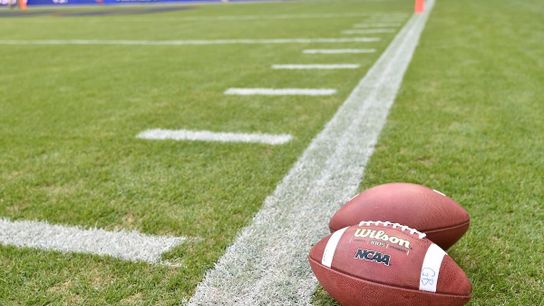Don't get it twisted: NIL is not a perfect system. Far from it. In fact, it's an incredibly flawed system that creates unneeded headaches for athletes and universities alike. See: Rashada, Jaden.
If you were to come with me a flaw, a problem, an injustice, an unfair outcome created by NIL, I'd likely agree and sympathize with you. As I said above, it is far from a perfect system. You have ideas how to improve it, I have my own, and those ideas might even overlap. That's fine. That's healthy. The system needs to change. The system needs to be overhauled.
But there are two indisputable truths about NIL in college sports:
1) It's not going away.
2) It's better than what it replaced.
The proof arrived Friday. With the deadline now passed, the NFL on Friday released the list of players who forfeit their college eligibility to enter the 2023 NFL Draft.
Eighty-two submitted their names, the lowest number in more than a decade. The 2023 numbers represent an 18 percent drop from 2022, and the 2022 number was a 22 percent drop from 2021. Overall, the draft has seen a 36 percent drop of early entrants from the final pre-NIL year to today.
While I can't sit here and tell you I interviewed the 40-ish players who would have entered the NFL draft in a world without NIL, the trend lines are obvious.
2014: 98
2015: 84
2016: 96
2017: 103
2018: 106
2019: 135
2020: 115
2021: 128
2022: 100
2023: 82
NFL draft early entries (underclassmen + graduates with eligibility remaining):
— Stewart Mandel (@slmandel) January 20, 2023
2019: 135
2020: 115
2021: 128
July 2021: NIL goes into effect
2022: 100
2023: 82
In 2019, the number of early entrants were growing at such a rate that the New York Times published a big piece titled: "As Underclassmen Flood the N.F.L. Draft, Landing Places Dry Up."
From 2017-21, an average of 117 players per year entered the NFL draft early, and that number was rising. The average bumped to 126 when narrowing the sample from 2019-21.
That means we can safely say between 35 and 40 players (perhaps a few more, perhaps a few less) returned to school to continue to hone their craft. In the process, some of them will earn a degree. In the meantime, those third- and fourth-year players will make their teams better (though perhaps not the same team, though that's a separate issue altogether.) All this in turn makes the game better.
To be clear, this was not some grand design. NIL was not a joint venture between the NFL and the NCAA to keep non-NFL-ready players in school where they belonged. NIL was approved at a legislative gunpoint, due to a combination of state legislatures and the Supreme Court. Reducing the numbers of NFL draft early entrants was just a positive byproduct.
But a positive byproduct, it was.
